

This project consists on the temporary recreation of the Palais des Tuileries, a royal palace in Paris which stood on the right bank of the River Seine until 1871, when it was destroyed by fire in the upheaval during the suppression of the Paris Commune. It closed off the western end of the Louvre courtyard, which has remained open since the destruction of the palace.
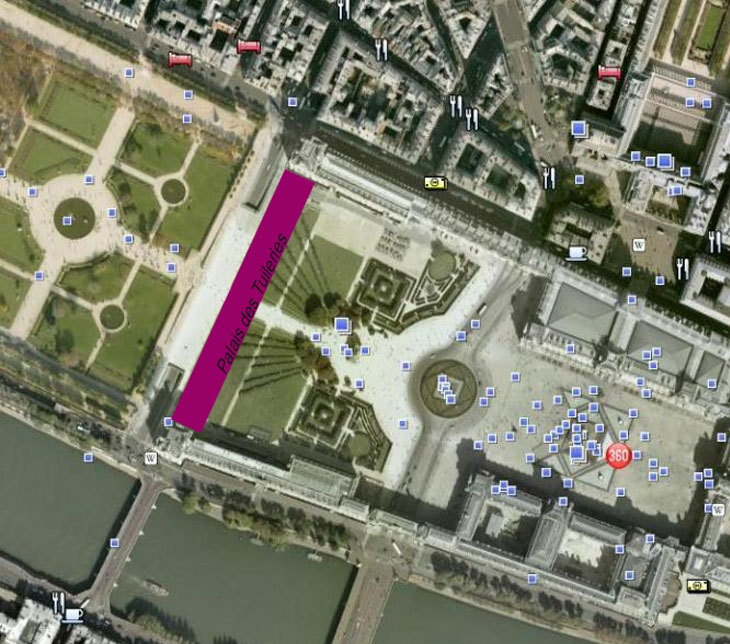
The palace was formed by a range of long, narrow buildings with high roofs that enclosed one major and two minor courtyards. The building was greatly enlarged in the 17th century, so that the southeast corner of the Tuileries joined the Louvre.
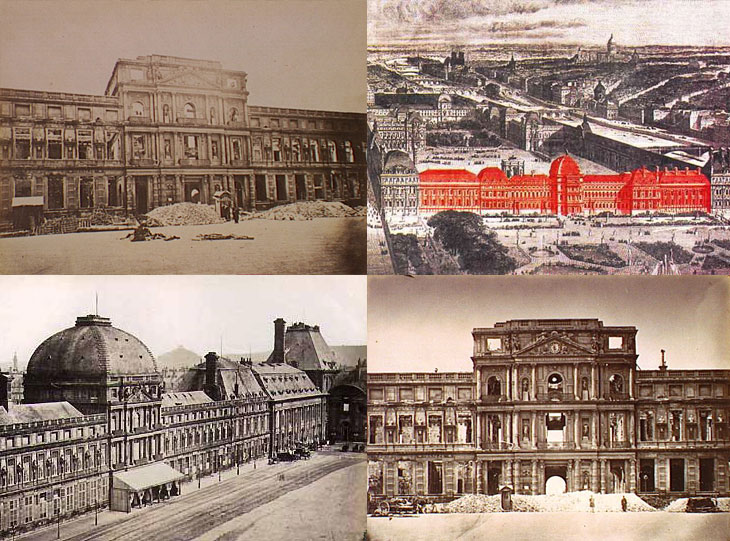
The name derives from the tile kilns or tuileries which had previously occupied the site.
The whole story of the palace, since it was planned by Catherine de´ Medici in 1564, and achieved by architect Philibert de l’Orme, until 1871, was full of history and grandeur: Henri IV, Louis XIV, Louis XV, Louis XVI , Louis XVII, Napoleon Bonaparte…
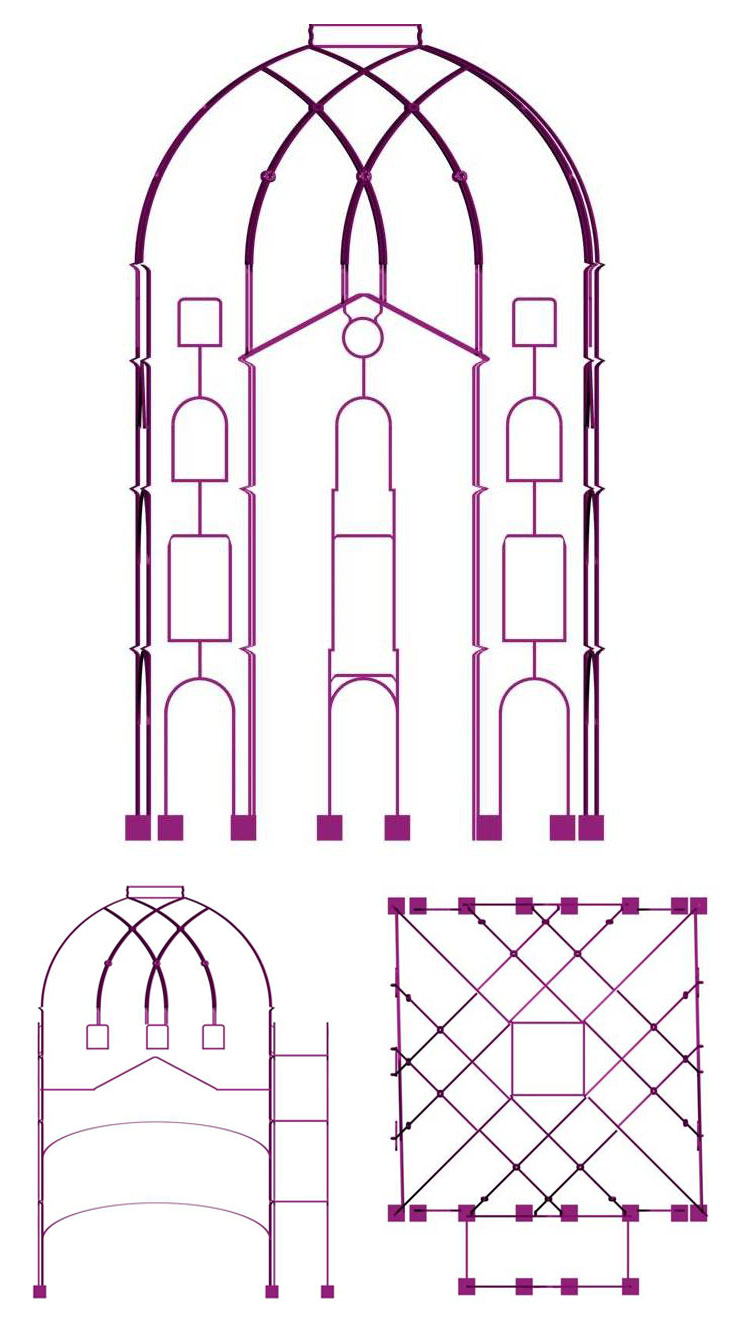
The site is now the location of the Tuileries Garden (Jardin des Tuileries), designed by André Le Nôtre.
Garaizabal will recompose in the first stage La Tour Centrale, which was the Salon des Marechaux. This Salon occupied two floors of the Pavillon de l’Horloge above the entrance hall. Occupying the center of the palace, this room was particularly impressive. It had twelve windows, overlooking both the courtyard and the garden. Its domed gilded ceiling was supported by trophies of arms. When night came, the room lit by sconces and gigantic chandeliers. The noble galas of the Second Empire took place in this Salon.
Garaizabal has created and registered the master lines of a monumental iron/light structure, according to the technique and artistical language of the “Memorias Urbanas” global project. As all the previous Memorias Urbanas, the installation will allow the visitors to “live” the absence/presence of the Tour Centrale at its original place and size.
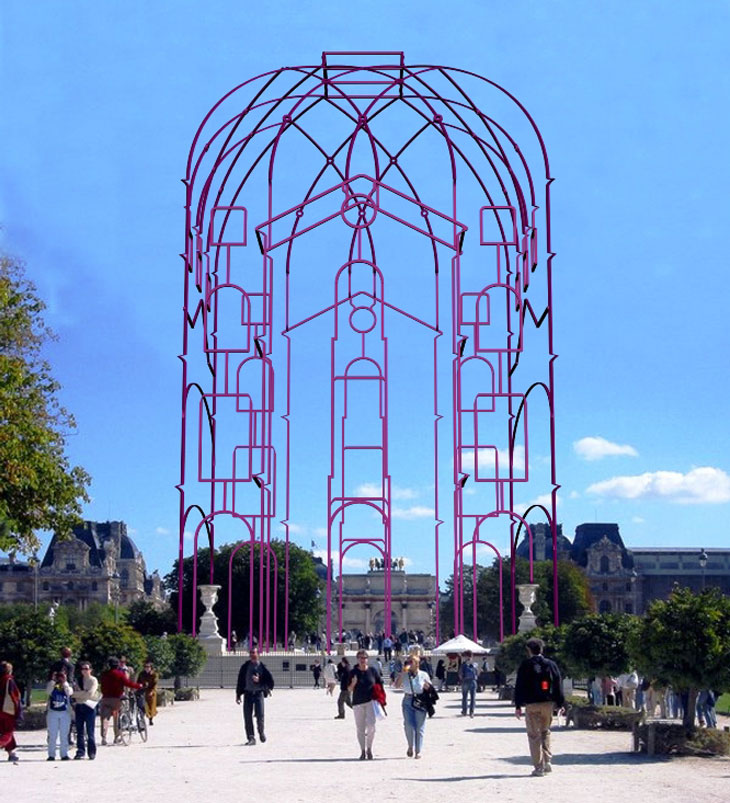
For night time, the installation is equipped with a sophisticated Light System. Based on 24V flexible tube led, it offers an extraordinary look, enriched with music coordinated by a computer. The Memorias Urbanas project is registered in Berlin by Juan Garaizabal.
On 23 May 1871, during the suppression of the Paris Commune, twelve men under the orders of a Communard, Dardelle, set the Tuileries on fire. The fire lasted forty-eight hours and entirely consumed the palace. The ruins of the Tuileries stood on the site for eleven years. The stone shell of the palace remained intact, and restoration was possible.
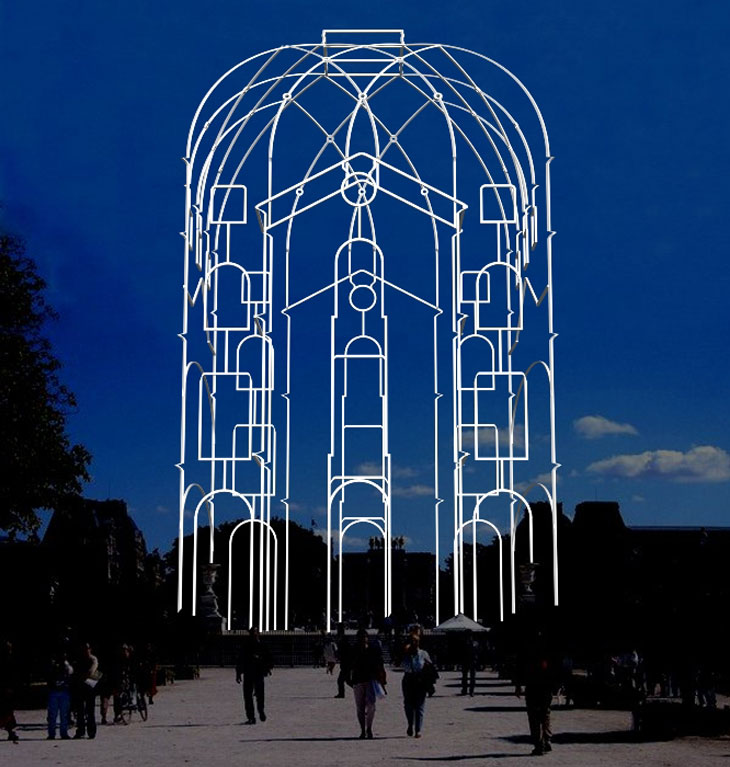
After much hesitation, the Third Republic decided not to restore the ruins of the Tuileries, which had become a symbol of the former royal and imperial regimes. On the other hand, the portions of the Louvre that had also been destroyed by fire were rebuilt in their original style.
In 1882, the French National Assembly voted for the demolition of the ruins, which were sold to a private entrepreneur for a ridiculous sum despite the protests of some members of French artistic and architectural circles, who opposed what they thought was a crime against French arts and history. The demolition was started in February 1883 and completed on 30 September 1883. Bits of stone and marble from the palace were sold by the private entrepreneur as souvenirs and even to build a castle in Corsica, near Ajaccio, the château de la Punta.
Since 2003, the Comité national pour la reconstruction des Tuileries has been proposing to rebuild the Tuileries Palace, is this a good idea? Garaizabal finds this debate very interesting; ephemeral reconstruction is the solution proposed by him.
Excellent wordpress web site right here.. It is difficult to uncover top quality creating like yours nowadays. I actually enjoy individuals like you! consider treatment
Thank you for your generous comment!!